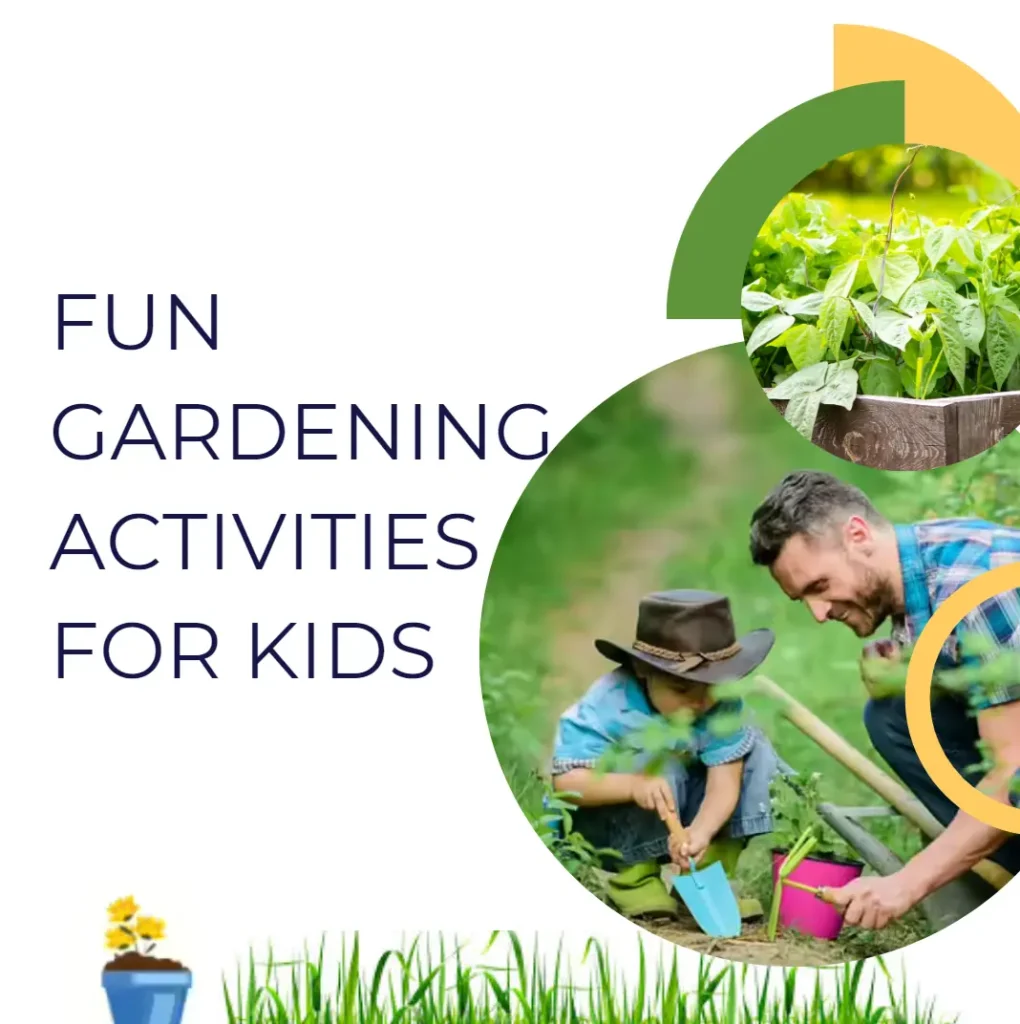Gardening is a beautiful activity that teaches children essential life skills. Gardening activities create learning opportunities for the curious mind. My first gardening memory was with my grandmother, helping her to water the plants, remove the dried leaves, and plant new seeds and mixing natural fertilizers in the soil. In this process, you will have fun unearthing the earthworms and small insects and will find the beauty of plants. I vividly remember planting a mango seed and after a period of time, I could see the plant grow and that made me extremely excited and happy from the inside.
As a young kid, when you plant, nurture, and take care of your plants, you develop a sense of bonding with nature. You understand the importance of giving and taking from nature. The easiest plants for kids to immediately relate to are onions and potatoes, the root plants that grow quickly and are vegetables that are on the plate everyday.
- Gardening improves children’s physical and mental well-being
- Gardening helps children develop their sensory inputs
- Maintaining a garden enhances your child’s botanical knowledge
- Gardening teaches children the values of hard work and patience and the importance of giving to nature
- Decorating the garden with painted pots fosters your child’s creativity
As a young kid, when you plant, nurture, and take care of your plants, you develop a sense of bonding with nature. You understand the importance of giving and taking from nature. The easiest plants for kids to immediately relate to are onions and potatoes, the root plants that grow quickly and are vegetables that are on the plate everyday.
Here are 20 ways to engage kids in gardening:
- Use pegs and strings to mark out your garden bed.
- Clear the soil surface, pull all the weeds and unnecessary stuff by hand..
- Loosen the top soil surface (top 20 cm) to help aerate the soil..
- Add organic matter – Add compost or manure thickly over the surface. Five to 10 cm is really good covering.
- Use a fork or spade to mix the soil and the organic matter and fertilizers with the loosened watery soil.
- Release some earthworms into the garden to loosen the soil and aerate it. This is a fun and curious activity for kids to learn about the importance of earthworms for soil and plant productivity and why earthworms are called the farmer’s best friend.
- Worms don’t like digging. So, please leave them to be as they settle in the soil. Meanwhile as the garden bed is settling, grow your seedlings.
- As your garden bed is ready for planting, make plans for how much quantity you want to plant and start removing any large weeds, raking the soil surface, measuring out the areas where each plant will be planted and mark them with pegs and strings.
- Moistening the soil – Soaking the soil two days before planting is most helpful for new seeds.
- Mark out rows – Using any long narrow stick, lie it along the garden bed where you wish to plant the row. Press the stick gently into the soil to create furrows to plant the seeds.
- Place seeds in the furrow; you can first mix the seed into a handful of sand and spread the seed/sand mix thinly along the furrow.
- Cover the seed – Make sure the seed is buried to the right depth.
- Water the seed – Use a fine mist spray.
- Keep the soil bed moist – during the germination period, the soil should not be allowed to dry out.
- Thin out plants – Once the new plants have merged, you may need to thin out the number of plants.
- Carefully water the seedlings to be transplanted the day before planting with the right amount and not with too much water.
- Mark where each seedling will be planted with a planting stick. Gently tap the bottom of the punnet with your other hand until the seedlings and soil become loose from the punnet in one complete block. Be careful not to damage the young roots of the seedlings. Don’t plant them too deeply.
- Don’t let the soil go dry and water the soil immediately.
- Put some organic mulch around as they are planted to keep the soil moist.
- Growing plants in various types of pots: Hanging baskets, Terracotta pots, Planter boxes, Fabric bags, Wall pouches, Recycled materials – like old tyres, or eggshells.
Gardening projects offer valuable opportunities for young kids and they learn best through hands-on gardening activities that engage their senses and help them understand and appreciate life beneath the surface.
Hope this is useful, thank you.
You may like to read: Healthy Packed Lunch Ideas for Kids, Benefits of Pet Dogs for Kids, & Is Gymnastics Good For Kids?

